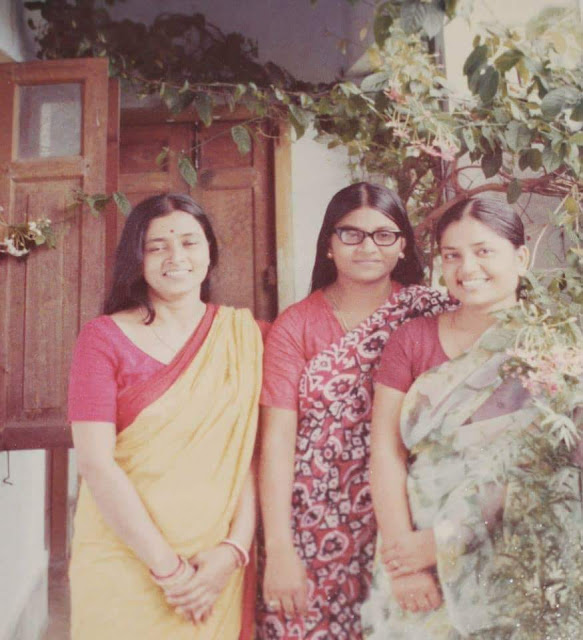Slavery at Oak Alley || Kalyani Rama
Too many intoxicating Southern magnolias were in bloom all
around me this morning, and I was thinking of Billie Holiday’s song, “Strange
Fruit”-
“Southern trees bear
a strange fruit
Blood on the leaves and blood at the root
Black bodies swinging in the southern breeze
Strange fruit hanging from the poplar trees
Pastoral scene of the gallant South
The bulging eyes and the twisted mouth
The scent of magnolia, sweet and fresh
Then the sudden smell of burning flesh
Here is a fruit for the crows to pluck
For the rain to gather, for the wind to suck
For the sun to rot, for the tree to drop
Here is a strange and bitter crop.”
We were in the deep south today, in Vacherie, Louisiana. We
went to see the Oak Alley sugar plantation. I had not seen any slavery site
before, and looking around the plantation and listening to the stories of the
slaves, I was extremely sorrowful. From its 28 Oaks to the vast open landscape,
Oak Alley told us a story of a plantation, written with blood and whips.
Jacques and Celina Roman were the owners of Oak Alley and
had 106 slaves. A human being, a slave, was bought with money like any other
animal. The price of a 52-year-old slave, Adeline, was $50.
They explained the difference between slaves that were
considered Creole and those who were considered American. Creole women were
born in Louisiana, spoke French, and were knowledgeable about the Sugar
plantations. American women were born outside of Louisiana, spoke English, and
were not very knowledgeable about sugar plantations.
The house slaves had lighter color skin whereas the field
slaves had darker skin.
Slaves owned little to no posessions, and lived in dismal
conditions. They did not even have any toilets before emancipation.
I was looking around the slave quarters and was thinking
about all the abuse and torture they had to go through. Tears were swelling up
in my eyes.
I started thinking about the maids and servants we have back
home still today. In Bangladesh and India, in every middle class,
upper-middle-class, and upper-class household, maids and servants do not get to
eat the same food as the owners of the household. The rice they eat will be
coarse, not as fine as the rice which other members of the house eat.
The maids sleep on the floor, and eat from tin plates, never
those made of glass.
They are forced to use separate bathrooms. These bathrooms
are typically in the Indian style where there is no commode. Instead, they use
a pan- a person's body does not touch the pan.
They are not allowed to sit on any chairs, beds, or sofas in
the house; they just dust them.
They cook, clean, wash dishes and clothes by hand, water the plants, look after the children, and basically work day and night like a machine for very little pay. Normally, nobody fetches a glass of water for themselves in a household, or switches on the ceiling fan; they wait for the maid to do it for them.
In America, we get cleaning ladies for $30 an hour, which is
reasonable labor; and they are paid that much for cleaning the house only.
If we were to give a good salary to the maids and servants in Bangladesh and India, the situation could be tolerated. But what we have right now is little better than slavery!
























Comments
Post a Comment